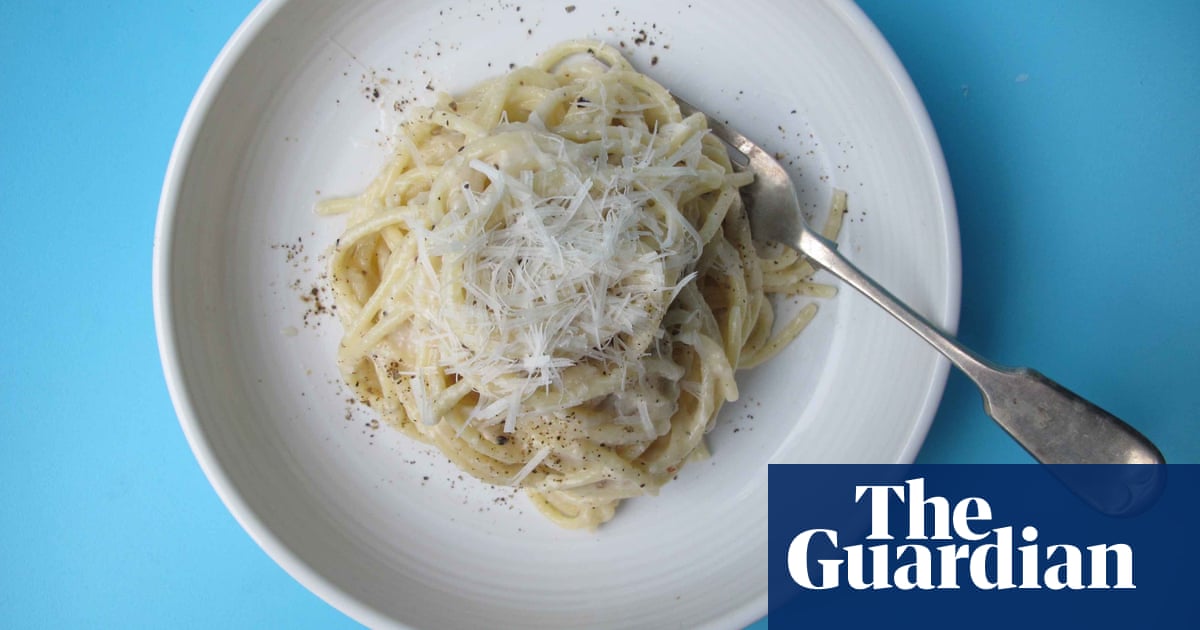It could be solely pasta, pecorino and black pepper, however cacio e pepe is just not practically as straightforward to make as some would think about.
Now, researchers have give you a scientific recipe that avoids a lumpy sauce each single time – but it surely all will get much more difficult.
Cacio e pepe is made by cooking pasta and utilizing the ensuing starchy water to create a sauce with grated cheese and pepper.
Researchers have beneficial that the proper recipe for 2 entails dissolving 5g of powdered starch in 50g of water – somewhat than utilizing the reserved pasta water, as conventional recipes do. Then, warmth the combination gently till it thickens and turns clear.
Subsequent, add 100g of water to chill the combination, earlier than mixing it with 200g of cheese and including toasted black pepper.
The ensuing sauce ought to then be blended with 300g of pasta that has been cooked in barely salted water till it’s al dente, drained and allowed to chill barely.
This step helps stop the extreme warmth from destabilising the sauce. Lastly, they are saying just a little reserved starchy water can be utilized to regulate the consistency as wanted.
“A real Italian grandmother or a talented dwelling chef from Rome would by no means want a scientific recipe for cacio e pepe, relying as an alternative on intuition and years of expertise,” the researchers write. “For everybody else, this information presents a sensible technique to grasp the dish.”
Dr Ivan Di Terlizzi, one of many co-authors of the analysis, stated the workforce consumed about 6kg of cheese for the research, with “most of it eaten with bread”.
“Though we’re nonetheless not bored with this scrumptious dish, one of many authors had blood checks displaying very excessive levels of cholesterol,” he added. “It’s the value of science!”
“When heated, cheese proteins change their configuration and, subsequently, mixture,” stated Dr Daniel Busiello, one other co-author of the research from Max Planck Institute for the Physics of Advanced Techniques in Germany. Starch, he stated, mitigated this impact by binding to the cheese proteins, lowering their direct interactions and therefore their formation of clumps.
To discover the key to a clean and creamy sauce, researchers carried out quite a lot of experiments utilizing a hard and fast cheese-to-water ratio, however with various concentrations of starch. The latter was managed by dissolving recognized portions of dry cornstarch within the water.
The outcomes revealed fewer clumps occurred at decrease temperatures, no matter starch focus, with the workforce including that the proteins didn’t begin to clump beneath 65C. As temperatures elevated, larger concentrations of starch had been wanted to keep away from clumps forming and stop the “mozzarella section” – the place large wads of cheese seem.
“At larger starch concentrations, temperature turns into much less of a priority, because the sauce stays clean even with much less exact warmth management,” stated Busiello.
Busiello added that pasta water alone contained too little starch to reliably stop clumping, producing a clean sauce solely with cautious temperature management.
“Our beneficial scientific strategy makes use of a starch-to-cheese ratio between 2% and three% by weight, permitting dwelling cooks to reliably create a clean sauce with out worrying an excessive amount of about temperature,” he stated.

